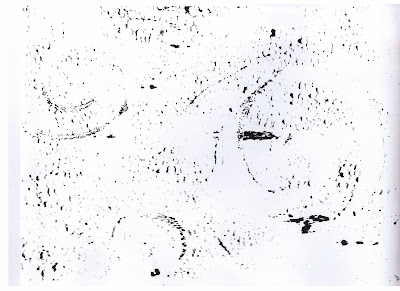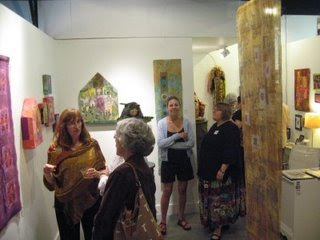



Traditional adinkra cloth from Ghana

Since then, I have created numerous adinkra cloths. Many of them were created as gifts for friends and family. I have created cloth with a healing message for sick friends, as a blessing for a new home or baby, and with thoughts of love for a wedding or funeral.

Wedding Adinkra created for a friend
I have also created adinkra cloth that helps me accept and make sense of disturbing events, both personal and in the larger world. As I explore the world of adinkra, I find that my cloth is moving away from the traditional grid pattern, and I have enjoyed incorporating adinkra into my artcloth.

Adinkra from my latest series
I share my interest in adinkra with others through workshops in which participants create a personal adinkra cloth. They reflect on themselves and their lives and create a cloth with symbols that are meaningful to them. The stories behind each person's cloth are amazing. One woman created a cloth in honor of a son who had dyed. Another created a cloth that reflected the growth and transformation of her life's journey. They truly are sacred cloth.
If I have piqued your interest, I am teaching a 2-day adinkra workshop this July at the Majestic Ranch Arts Foundation. Participants will hand-dye the cloth, learn the most common adinkra symbols and then design and create their own adinkra. For more information, visit my website.





































 Compassionate Mother by Linda Rael
Compassionate Mother by Linda Rael Michael of a Thousand Eyes by Susie Monday
Michael of a Thousand Eyes by Susie Monday Art Quilts by Susie Monday
Art Quilts by Susie Monday 


